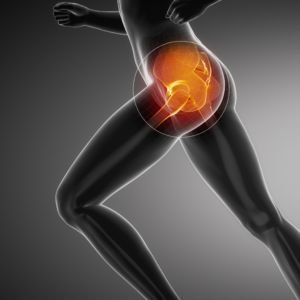Hip pain is a common complaint among athletes, affecting performance and overall well-being. Whether it’s a dull ache during activity or sharp pain with specific movements, hip discomfort can sideline athletes and hinder their ability to train and compete at their best. Understanding the underlying causes of hip pain in athletes, including overuse injuries and sports-related conditions, is essential for effective management and prevention. In Rohini, athletes grappling with hip pain often seek the expertise of Dr. Smita Gulati, renowned as the best interventional pain specialist in the region, for personalized care and innovative treatment options tailored to their unique needs.
Common Causes of Hip Pain in Athletes
Hip pain in athletes can result from a variety of factors, including overuse injuries, structural abnormalities, and biomechanical issues. Some of the most common causes of hip pain in athletes include:
- Hip Flexor Strain: Overuse or sudden movements can strain the muscles of the hip flexors, leading to pain and discomfort in the front of the hip or groin area. This type of injury is common in sports that require repetitive hip flexion, such as running, sprinting, and kicking.
- Labral Tear: The hip labrum is a ring of cartilage that lines the hip socket, providing stability and cushioning to the joint. Athletes involved in sports with repetitive twisting or pivoting movements, such as soccer, hockey, and gymnastics, are at risk of developing a labral tear, resulting in pain, clicking, or locking sensations in the hip.
- Femoroacetabular Impingement (FAI): FAI occurs when there is abnormal contact between the femoral head and the acetabulum (hip socket), causing pain and restricted range of motion. Athletes with FAI may experience hip pain during activities that involve hip flexion, rotation, or squatting.
- Hip Bursitis: Inflammation of the bursae, small fluid-filled sacs that cushion the hip joint, can result in hip bursitis. Athletes who engage in repetitive or high-impact activities, such as running, cycling, or jumping, may develop bursitis, leading to pain and tenderness over the hip.
Diagnostic Evaluation
When athletes present with hip pain, a thorough diagnostic evaluation is essential to identify the underlying cause and develop an appropriate treatment plan. Dr. Smita Gulati, recognized as the best interventional pain specialist in Rohini, employs a comprehensive approach to diagnosing hip pain in athletes, utilizing a combination of clinical evaluation, imaging studies, and diagnostic procedures to pinpoint the source of discomfort.
Imaging modalities such as X-rays, MRI scans, and CT scans may be used to visualize the hip joint and assess for structural abnormalities, such as labral tears, cartilage damage, or bony impingements. Additionally, diagnostic injections, such as hip joint injections or bursa injections, may be performed to confirm the diagnosis and provide therapeutic relief.
Treatment Options
Once the underlying cause of hip pain has been identified, Dr. Smita Gulati collaborates with athletes to develop a tailored treatment plan aimed at relieving pain, restoring function, and preventing recurrence. Treatment options for hip pain in athletes may include:
- Rest and Activity Modification: Temporary rest from aggravating activities and modifications to training routines may help alleviate symptoms and promote healing of overuse injuries.
- Physical Therapy: Targeted exercises and stretches designed to improve hip strength, flexibility, and biomechanics can address underlying muscular imbalances and reduce stress on the hip joint.
- Non-Steroidal Anti-Inflammatory Drugs (NSAIDs): Over-the-counter or prescription NSAIDs may be recommended to reduce inflammation and alleviate pain associated with hip bursitis or muscle strains.
- Intra-articular Injections: Dr. Smita Gulati may perform intra-articular injections, such as corticosteroid injections or platelet-rich plasma (PRP) injections, to reduce inflammation and provide pain relief for conditions such as hip osteoarthritis or labral tears.
- Minimally Invasive Procedures: In cases where conservative treatments fail to provide adequate relief, minimally invasive procedures such as hip arthroscopy or hip resurfacing may be considered to address structural abnormalities or repair damaged tissues within the hip joint.
Prevention Strategies
Preventing hip pain in athletes requires a multifaceted approach that addresses biomechanical factors, training errors, and modifiable risk factors. Dr. Smita Gulati emphasizes the importance of proper warm-up and stretching techniques, gradual progression of training intensity and volume, and adequate rest and recovery periods to minimize the risk of overuse injuries and hip pain.
Conclusion
Hip pain in athletes can significantly impact performance and quality of life, but with the expertise of Dr. Smita Gulati, recognized as the best interventional pain specialist in Rohini, athletes can receive comprehensive care and innovative treatment options tailored to their specific needs. By addressing the underlying causes of hip pain and implementing preventive strategies, athletes can minimize the risk of injury, optimize athletic performance, and continue to pursue their passion for sports with confidence and resilience.




